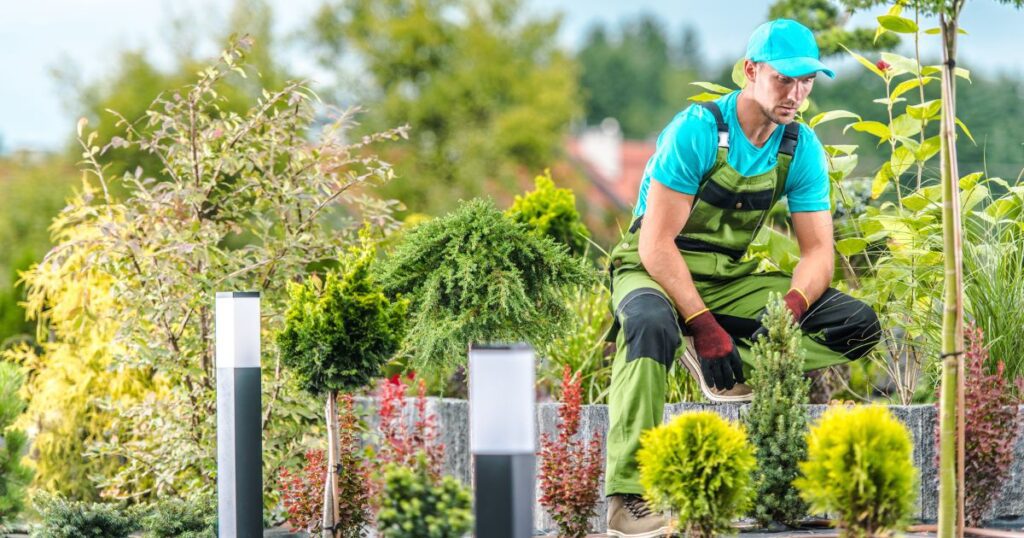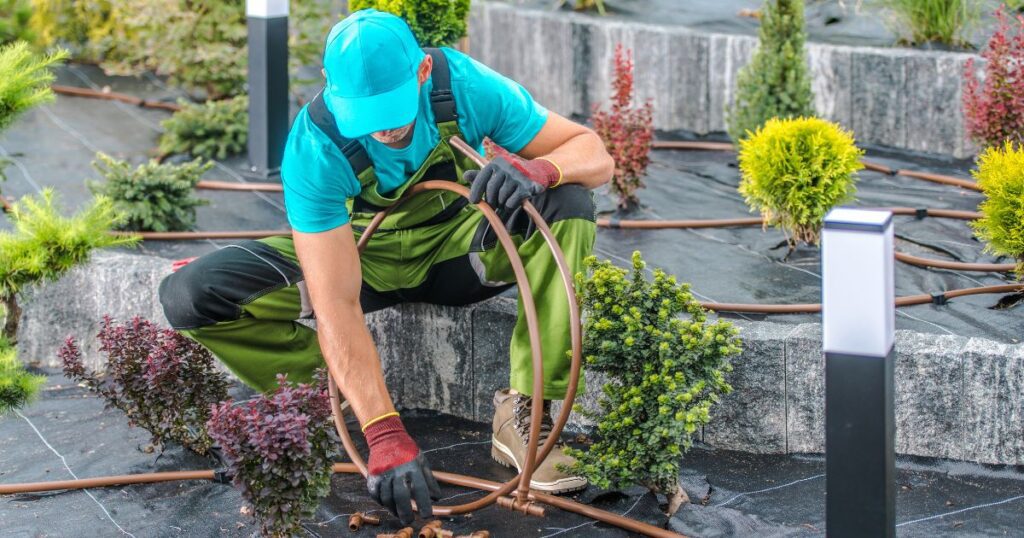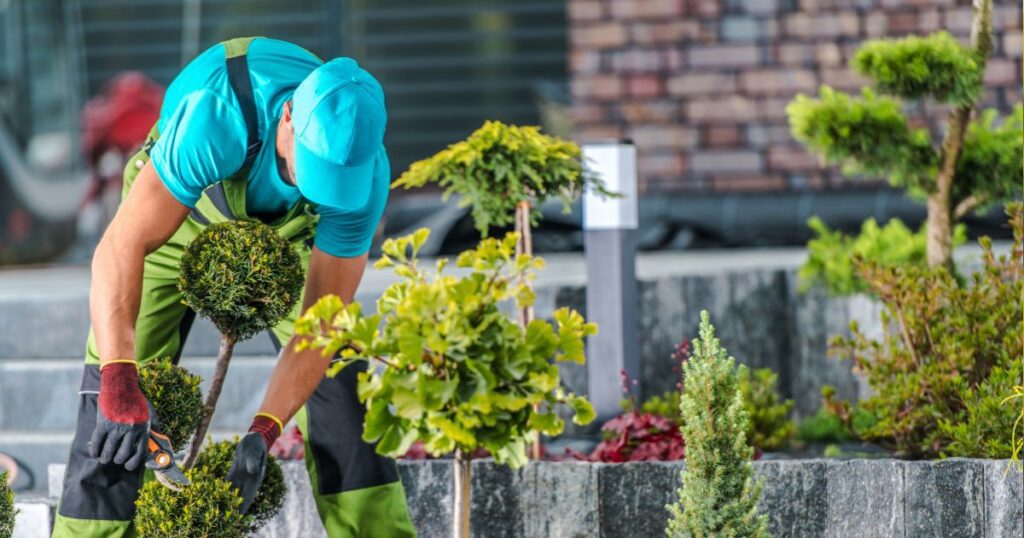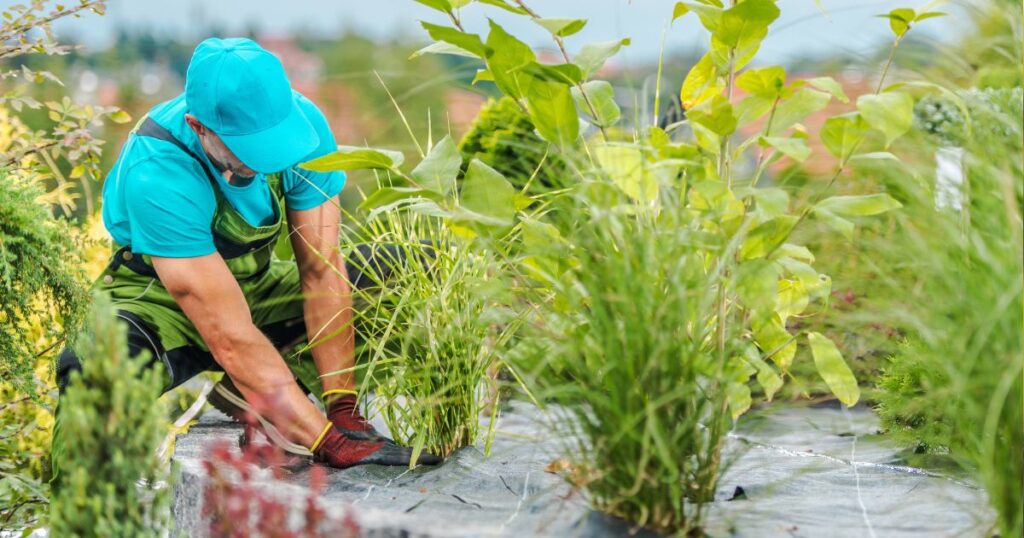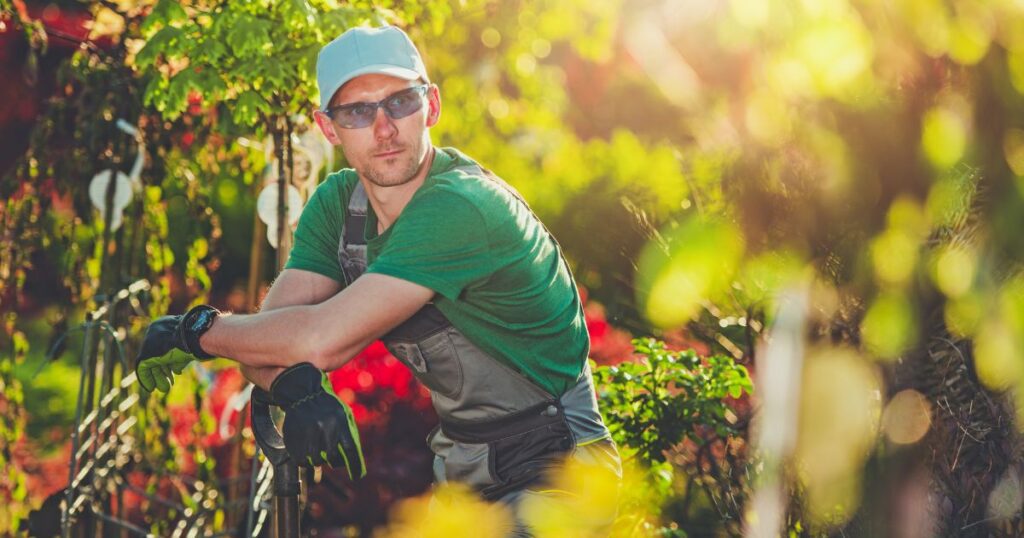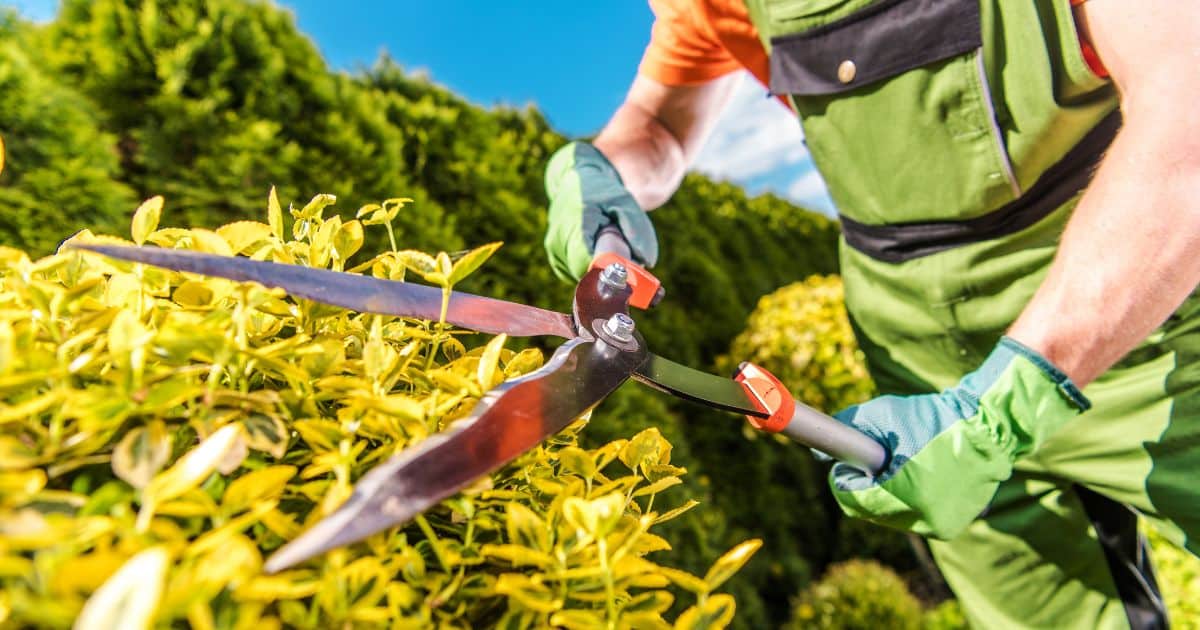
Introduction
Calling all nature enthusiasts and backyard dreamers! Have you ever wondered who possesses the magical powers to transform dull lawns into verdant wonderlands? Well, dear friends, prepare to embark on an exciting journey into the captivating world of landscapers. What is landscaper? In this delightful exploration, we’ll unravel the mysteries of what exactly a landscaper is and how they weave their botanical wizardry to create awe-inspiring outdoor spaces. So, grab your shovels, put on your imagination hats, and let’s dig into the fascinating realm of landscapers together. Trust us, the enchantment that awaits will leave you craving more green adventures!
A landscaper is a professional who designs, creates, and maintains outdoor spaces, such as gardens, parks, and lawns. They work with clients to transform outdoor areas by selecting and arranging plants, installing structures like pathways or irrigation systems, and ensuring proper maintenance. Landscapers use their expertise in horticulture, design principles, and practical skills to enhance the aesthetic appeal and functionality of outdoor spaces.
Definition of a Landscaper
A landscaper refers to an individual who designs and maintains outdoor environments for clients. Most landscapers are self-employed or work for companies that offer landscaping services.
They have extensive knowledge about plants and their growth requirements in different landscapes. They also have expertise in designing hardscapes such as patios, decks, retaining walls, or water features.
The Importance of Landscaping
Landscaping is essential because it enhances the beauty of outdoor spaces while providing numerous environmental benefits. A well-designed landscape creates an attractive ambiance while reducing stress levels among individuals spending time in it. Landscapes also improve air quality by filtering out pollutants such as carbon dioxide and other harmful gases.
Additionally, a well-designed landscape has economic benefits; it increases property value while boosting the curb appeal of homes or commercial properties. Commercial properties with beautiful landscapes attract more customers, while tenants occupying buildings with good outdoor spaces tend to stay longer.
RELATED: How to Become a Professional Landscaper: Growing Your Career
Overview: What Will Be Covered In This Article?
This article will cover several topics related to understanding what a landscaper is and their importance in creating beautiful outdoor spaces. We shall cover what landscapers do, including planting trees and flowers, designing hardscapes like patios or walkways, as well as installing irrigation systems to maintain healthy gardens. We shall also explore different types of landscaping services, such as residential, commercial, and public landscaping.
Furthermore, we shall highlight the benefits of hiring a professional landscaper, such as saving time and effort while receiving expert advice on design and plant selection. We shall examine emerging trends in landscaping, such as sustainable-focused designs, the use of native plants, and creating of outdoor living spaces.
What Does a Landscaper Do?
Landscaping is an art form that requires skill, creativity, and technical expertise. A landscaper is responsible for designing, constructing, and maintaining outdoor spaces. These professionals work with a variety of elements to create beautiful and functional landscapes that enhance the aesthetics of any property.
Designing Outdoor Spaces
One of the primary responsibilities of a landscaper is to design outdoor spaces. This involves creating a plan for the overall layout of the area, including where plants will be placed, what types of hardscaping features will be included (such as patios and walkways), and how water features will be incorporated into the design.
To create an effective design, landscapers often take into account factors such as sun exposure, drainage issues, soil quality, and existing structures. They then use this information to select plants and materials that will thrive in the space.
Planting and Maintaining Gardens
Plant selection is another crucial aspect of landscaping. Landscapers not only choose plants based on their aesthetic value but also consider factors such as maintenance requirements and seasonal changes in climate. They also take into account how different plant species interact with each other to create a harmonious garden space.
In addition to selecting plants for new gardens or landscapes, landscapers are also responsible for maintaining them. This can include tasks such as pruning shrubs and trees, fertilizing plants on a scheduled basis, mulching beds, or removing weeds.
Installing Hardscapes (Patios, Walkways, etc.)
Hardscaping refers to the use of hard materials such as stone pavers or concrete in landscape design. Landscapers may install patios for outdoor entertainment purposes and retaining walls that can help stabilize the soil around slopes or walkways connecting different parts of a yard.
When installing hardscaping elements, landscapers must consider factors such as the slope of the land, drainage issues, and the overall style and theme of the landscape. They also need to ensure that structures are built safely and to code.
Irrigation System Installation and Maintenance
Watering is essential to keeping plants healthy, which is why irrigation system installation and maintenance are crucial parts of a landscaper’s job. Landscapers can install sprinkler systems that water plants on a scheduled basis or drip irrigation for more precise watering.
In addition to installation, landscapers also maintain irrigation systems by checking for leaks or clogging in pipes, adjusting sprinkler heads, or replacing clogged nozzles. They may also program smart controllers which use weather data to adjust watering based on climate changes.
Conclusion
Landscaping is an intricate process that requires a combination of skills, including design knowledge, plant selection expertise, understanding of hardscaping materials, and irrigation system installation experience. A professional landscaper has all these skills required to create stunning outdoor landscapes while maintaining them properly so they can thrive year-round. By hiring an experienced professional for your landscaping needs, you can have peace of mind knowing your outdoor space will look beautiful while increasing property value at the same time.
Types of Landscaping Services
Residential Landscaping: Creating a Beautiful Outdoor Space for Your Home
A residential landscaper is responsible for designing and installing outdoor spaces that enhance the beauty and functionality of a home. This includes areas such as front yards, backyards, patios, and gardens. One of the primary goals of residential landscaping is to create an outdoor space that reflects the homeowner’s personal style while also increasing the overall value of the property.
A skilled residential landscaper will work closely with homeowners to determine their specific needs and desires for their outdoor space. They will take into account factors such as climate, soil type, sunlight exposure, and local regulations when designing and implementing a landscaping plan.
Popular features found in many residential landscapes include flower beds, shrubs, trees, water features (such as fountains or ponds), hardscapes (such as walkways or patios), and lighting. Whether you’re looking to create a tranquil escape from the stresses of daily life or an outdoor space perfect for entertaining guests, a residential landscaper can help make your vision a reality.
Commercial Landscaping: Creating Curb Appeal for Your Business
Commercial landscaping focuses on creating an aesthetically pleasing exterior environment for businesses. A well-designed commercial landscape can attract customers by making your business stand out from competitors in the area.
Commercial landscape design involves creating inviting entryways with stunning entrances that draw people in a while adding functionality by providing safe access points. When it comes to commercial landscaping projects, multiple considerations depend on business needs, such as maintaining privacy or safety concerns like using low-growing plants near parking lots so drivers have clear visibility when entering/exiting vehicles.
Some common features found in commercial landscapes include flower beds around signs or entrances; trees lining driveways; manicured lawns with decorative stone borders; hardscapes like pavers or walkways; and water features like fountains or ponds. Whether you’re a small business owner looking to enhance your curb appeal or an established corporation looking to make a statement, a commercial landscaper can help design an inviting landscape that will leave customers and visitors with a lasting impression of your business.
Public Landscaping: Creating Green Spaces for Everyone
Public landscaping involves designing and maintaining outdoor spaces for public use, such as parks, playgrounds, school grounds, recreational areas, and public gardens. The goal of public landscaping is to create spaces that are both visually appealing and safe for all users. Many public landscapes incorporate natural elements that benefit the environment while also providing recreation opportunities.
Public parks often include grassy areas for picnics or sports activities; trees providing shade during hot summer months; water features like ponds or streams offering natural habitats for wildlife; walking paths lined with benches where visitors can relax and enjoy the scenery. Some of the most important aspects of public landscaping are accessibility, safety, durability, and environmental sustainability.
Creating open green spaces accessible to everyone ensures social equity while promoting healthy lifestyles by offering opportunities for physical activity in a safe setting. Landscaping services can vary greatly depending on the type of project at hand.
Whether it’s creating an oasis in your backyard, designing an inviting entrance to your commercial property, or enhancing outdoor spaces accessible to everyone – each type requires its own unique approach informed by specific factors such as location or intended use. Hiring professional landscapers who specialize in each area can help bring your vision to life while ensuring high-quality results through years of experience and expertise.
The Benefits of Hiring a Professional Landscaper
Saves Time and Effort
When it comes to landscaping, there is a lot of work involved. From designing outdoor spaces to planting and maintaining gardens, it can be a time-consuming and physically demanding task. By hiring a professional landscaper, you can save yourself time and effort.
They have the expertise, tools, and labor force to get the job done quickly and efficiently. Professional landscapers also know how to manage their time effectively, ensuring that your landscaping project is completed on schedule.
They have experience working on different projects with varying degrees of complexity, which means they are able to anticipate potential challenges or problems before they arise. Whether you have a small yard or a large commercial property, hiring a professional landscaper will enable you to spend your time doing other things that matter most to you.
Expertise in Design and Plant Selection
Designing an outdoor space involves more than just putting plants in the ground. It requires careful planning, knowledge of local climate conditions, soil types and proper plant selection based on these factors.
A professional landscaper has the expertise necessary for designing your landscape according to your needs while keeping in mind sustainability goals. They have access to information about different species of plants that are suitable for your climate zone as well as any potential pests or diseases that may affect them.
Professional landscapers use their expertise in design principles such as color theory, balance & symmetry when creating an outdoor space. They will create focal points using garden features like water features or sculptures, which add interest all year round.
Increases Property Value
Landscaping not only enhances the beauty of your property but also increases its overall value. According to studies conducted by home improvement experts across North America, homes with well-maintained landscapes sell more quickly than those without one!
A professional landscaper will work with you to create a unique design that complements your home’s architecture and style. They will use their expertise to make sure the space is designed in such a way that it enhances the property value.
With the help of a professional landscaper, your outdoor space can become an extension of your home. A beautiful landscape creates an inviting atmosphere, encouraging families and visitors to spend time outdoors.
Hiring a professional landscaper comes with many benefits. It saves you time and effort while ensuring that your outdoor space is designed efficiently and beautifully.
Additionally, working with someone who has extensive knowledge about plants, sustainability practices, and design principles adds value to your property. It’s worth investing in professional landscaping services if you want to transform your outdoor space into something breathtakingly beautiful!
Common Tools Used by Landscapers
Every landscaper needs a set of tools to get the job done efficiently and effectively. While there are many different tools available on the market, some are more commonly used than others. In this section, we will cover four of the most common tools used by professional landscapers: lawnmowers, hedge trimmers, pruners, and hand trowels.
Lawn Mowers
Lawnmowers come in a variety of sizes and styles, each designed for different types of lawns and landscapes. Push mowers are ideal for small lawns or areas with tight corners that cannot be reached with a riding mower. Riding mowers are best used on larger properties with wide open spaces.
They come equipped with varying blade widths depending on the size of the lawn being maintained. A mulching lawn mower is another popular type among landscapers as it allows clippings to be cut into tiny pieces and returned to the soil as a natural fertilizer.
This can save homeowners time and money in fertilizing their lawns. In addition to traditional gas-powered models, many landscapers now use electric or battery-powered lawnmowers as they are more eco-friendly, cheaper to operate over time, and require less maintenance.
Hedge Trimmers
Hedge trimmers are an essential tool for maintaining hedges or shrubs in a landscape design. They come in both gas-powered and electric models with varying blade lengths to accommodate different types of foliage or pruning needs.
One popular type of hedge trimmer is the long-reach pole trimmer which allows landscapers to reach high hedges or shrubs without having to use ladders or climb trees. Safety should always be a top priority when using hedge trimmers due to their sharp blades and potential hazards such as falling debris from overhead trimming.
Pruners
Pruners are hand-held tools used to trim and shape trees, bushes, and other plants. There are two main types of pruners: bypass pruners and anvil pruners. Bypass pruners are designed to cut through living plant material without damaging it.
They work like scissors with two sharp blades that bypass each other as they cut. Anvil pruners have a sharp blade that cuts down onto a flat surface or anvil.
They are best suited for dead material or heavy pruning tasks. Both types of pruners come in different sizes and styles to accommodate for different hand sizes and pruning needs.
Hand Trowels
Hand trowels are small handheld tools used for planting, transplanting, weeding, and cultivating soil. They come in a variety of shapes and sizes depending on the task at hand.
A pointed trowel is ideal for digging small holes for planting seeds, while a flat trowel is better suited for planting larger plants or shrubs. Ergonomic handles can also make a big difference in reducing fatigue during long hours of use.
In addition to these commonly used tools, landscapers may also use equipment such as leaf blowers, string trimmers, and chainsaws, depending on the type of work being performed. However, no matter what tool is being used, safety should always be a top priority when working with landscaping equipment.
Landscaping Trends to Watch Out For in 2021
Sustainability-focused Landscaping Designs
With environmental concerns gaining more attention, sustainable landscaping has become a trend in landscape design. Sustainable landscapes are designed to reduce water usage, minimize waste and pollution, and create a healthy ecosystem. To achieve this, landscapers use techniques like planting native vegetation that requires minimal watering and maintenance or installing rainwater harvesting systems to collect rainwater for irrigation.
Edible gardens are also becoming increasingly popular as they provide fresh produce while reducing the carbon footprint associated with transporting food. An important aspect of sustainable landscaping is reducing the use of harmful chemicals.
Most traditional pesticides and fertilizers can be detrimental to the environment and human health. Organic fertilizers and natural pest control methods like companion planting have become popular alternatives for creating thriving gardens without compromising on safety.
Use of Native Plants
Incorporating native plants into landscaping design adds natural beauty while supporting local ecosystems. Native plants are species that have developed within particular regions over time and have adapted to the local climate, soil conditions, and pests.
They require minimal maintenance since they are already suited to their environment hence reducing water usage, fertilizer applications, pest control measures as well as work hours for the landscaper. Native plants offer additional benefits such as attracting local pollinators like butterflies and bees that help keep ecosystems healthy by spreading pollen from plant to plant which produces seeds for growth.
Creating Outdoor Living Spaces
Outdoor living spaces continue to be a top trend in 2021 landscaping designs. Homeowners are looking for ways to extend their living spaces beyond their home’s interior walls by creating outdoor entertainment areas. These include outdoor kitchens with grills or pizza ovens installed under pergolas or covered patios, providing shade on hot days while allowing you to enjoy your meal outside regardless of weather conditions.
Other outdoor living features include fire pits or fireplaces, water features like fountains and ponds, comfortable seating areas, and even outdoor movie theaters. These elements can be incorporated into the landscape design while still maintaining a natural look and feel.
Creating an outdoor living area adds value to your home by extending your living space and providing a place to relax and unwind. It is also an investment that will pay off in the future by making your home more attractive to potential buyers.
Conclusion
As we have seen, sustainability-focused landscaping designs that utilize native plants are increasingly popular among homeowners. Creating outdoor living spaces has also become a must-have feature for most homes. With these trends in mind, landscapers should adapt to incorporate these elements into their designs to meet their client’s demands while preserving the environment’s beauty.
Applying sustainable practices not only benefits the environment but also saves homeowners money on maintenance costs while increasing property value. Overall, keeping up with landscaping trends allows landscapers to provide their clients with beautiful spaces they can enjoy for years to come.
The Future of Landscaping: Technology Advancements and Innovations
Drones for Surveying Landscapes: The Sky’s the Limit
One of the most promising technological advancements in landscaping is the use of drones to survey landscapes. These unmanned aerial vehicles can capture detailed images, videos, and 3D models of landscapes, allowing landscapers to gather accurate information on land features, vegetation density, and terrain contours.
This data is then used to plan more efficient and effective landscaping projects. Drones can also be equipped with thermal imaging cameras to detect heat signatures and identify areas that need irrigation or pest control.
They can even provide real-time monitoring of plant health by analyzing the color spectrum of leaves. In addition to saving time and increasing accuracy, using drones for surveying saves landscapers from having to traverse difficult terrain or climb tall trees for visual inspection.
Smart Irrigation Systems: Saving Water with Efficiency
As water conservation becomes an increasingly important issue in landscaping, smart irrigation systems are emerging as a solution that saves both money and resources. These systems use internet-connected sensors to monitor weather conditions and soil moisture levels in real-time, adjusting watering schedules accordingly. Smart irrigation systems also allow for remote management through mobile apps or websites, enabling users to turn sprinklers on or off from anywhere at any time.
Additionally, these systems can detect leaks or other malfunctions and alert users immediately. By reducing water waste due to overwatering or inefficient watering schedules, smart irrigation systems not only help conserve water but also lower utility costs for homeowners and businesses alike.
Virtual Reality for Landscape Design: Bringing Visions to Life
Virtual reality (VR) technology is revolutionizing landscape design by giving clients a realistic preview of their proposed outdoor spaces before any work has begun. VR headsets allow clients to “walk” through their virtual gardens or patios, viewing every detail from different angles and even changing materials or colors in real time. Using VR technology also enables designers to collaborate more effectively with clients by allowing them to make changes and adjustments before construction begins, reducing the risk of costly mistakes or misunderstandings.
RELATED: How Much to Hire a Landscaper: A Comprehensive Guide to Hiring a Professional Landscaper
Frequently Asked Questions
What does a landscaper actually do?
A landscaper is responsible for designing, creating, and maintaining outdoor spaces, which may involve tasks such as planting, lawn care, irrigation, hardscape installation, and landscape maintenance.
What is the meaning of landscaper?
The term “landscaper” refers to a professional who specializes in landscaping services, including design, installation, and maintenance of outdoor environments.
What is top pay for landscaper?
The top pay for a landscaper can vary depending on factors such as experience, qualifications, location, and job responsibilities, but experienced and skilled landscapers can earn higher wages.
What is the difference between gardener and landscaper?
The main difference between a gardener and a landscaper is the scope of their work. A gardener typically focuses on planting, cultivating, and maintaining plants and gardens, while a landscaper may handle a broader range of tasks, including designing and transforming outdoor spaces.
What is the personality of a landscaper?
The personality traits commonly associated with landscapers include creativity, attention to detail, physical stamina, teamwork, problem-solving skills, and a passion for nature and the outdoors.
What do landscapers wear?
Landscapers typically wear protective clothing, including sturdy work boots, long pants, gloves, and sometimes a hat or protective eyewear, to ensure safety and comfort while working in outdoor environments.
Conclusion
The future of landscaping is looking brighter than ever, thanks to advancements in technology. With tools like drones for surveying landscapes, smart irrigation systems for conserving water and optimizing efficiency, and virtual reality for bringing designs to life, landscapers can provide more accurate, sustainable, and visually stunning outdoor spaces for their clients. As these technologies continue to evolve and improve, we can look forward to a greener world that is both beautiful and efficient.

